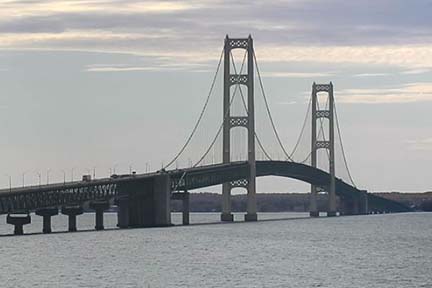
Whitmer and Gilchrist Host Small Business Summit

FOR IMMEDIATE RELEASE June 23, 2021 Contact: [email protected]
Gov. Whitmer and Lt. Governor Gilchrist Host Small Business Summit to Drive Long-Term Economic Growth in Michigan
LANSING, Mich. – Governor Gretchen Whitmer and Lt. Governor Garlin Gilchrist II joined administration officials from the Department of Labor and Economic Opportunity and the Michigan Economic Development Corporation in hosting small business owners, advocates, support organizations and lenders from across the state today during a virtual Small Business Summit meant to inform a comprehensive strategy for small business investment in Michigan.
With $3.5 billion in additional state revenues expected following last month’s Consensus Revenue Estimating Conference and incoming federal funding that includes nearly $6.5 billion in flexible funding through the American Rescue Plan and $176 million in federal State Small Business Credit Initiative (SSBCI) funds, Michigan is in a strong position to make the investments that can transform the landscape for small businesses and help both residents and businesses recover from the pandemic.
“As we continue Michigan’s economic jumpstart, we have an incredible opportunity to investment in people, infrastructure, and in the future of small businesses all across our state,” said Governor Whitmer. “The productive conversations and innovative solutions brought forward throughout today’s summit will be vital as we determine how to put the billions in federal dollars we have to support small businesses in Michigan in the years ahead.” With more than 600 stakeholders registered fr
The summit featured opening remarks from Governor Whitmer, a fireside chat with Lt. Governor Gilchrist hosted by incoming MEDC CEO Quentin L. Messer, Jr., a conversation with Mr. Sperling and U.S. Senator Gary Peters around U.S. federal policy issues and breakouts focused on specific needs of micro- and second stage businesses, unique regional strengths and opportunities and access to capital and how to make that access better.
A recent survey conducted by New Economy Initiative found 93 percent of businesses in southeast Michigan have less than 10 employees and 77 percent stated capital was their most significant need. The impact of small businesses on the economy is felt throughout the state with 63 percent of Lansing and Grand Rapids businesses having less than 10 employees and 71 percent and 70 percent in Traverse City and Marquette having less than 10 employees, respectively.
“As we work to build our economy back better than before, we must make sure those businesses that may have been left behind before are coming along with us now, every step of the way, with the resources and support they need to be successful in Michigan,” said Lt. Governor Gilchrist. “It’s not enough to have a strong economy, we must do everything in our power to make sure that Michigan’s economy is inclusive, and every Michigander should feel its benefits.”
Today’s statewide summit was a strong start to these critical conversations, with plans already in place to continue holding similar conversations in communities across Michigan, including Detroit, Flint, Grand Rapids and Traverse City.
“Today’s discussions were a showcase on how bringing state and local leaders, economic development officials, business owners, lenders and community organizations together can help us find solutions to the challenges facing Michigan’s main street businesses,” said Susan Corbin, acting director of the Department of Labor and Economic Opportunity. “We look forward to continuing the conversation to help develop a comprehensive investment strategy that makes available funding go as far as possible to support the largest pool of small businesses.” |






